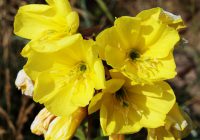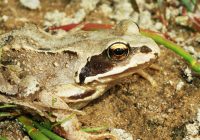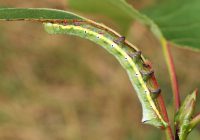Dr Phil Smith’s Wildlife Notes
July 2013
Continuing the extreme weather theme of 2013, a two-and-a-half week heatwave produced the warmest July since the record-breaker of 2006. Although most of the period was dry, a few welcome thundery showers contributed to about average rainfall.
Duneland insects responded well to the increasing temperatures, especially my favourite group, the warmth-loving dragonflies. On 9th I visited a group of four ponds in the Birkdale frontal dunes that were restored in March 2012 in the hope of improving their wildlife value. By recording dragonfly populations, I hope to judge the success of this operation. A good count of 158 individuals of six species included the first Ruddy Darter of the summer. A further bonus was a noisy Green Sandpiper, one of our earliest migrating waders.
A few days later, the still boggy borrow-pits at Cabin Hill National Nature Reserve produced lots more dragonflies, including four of our largest species, the majestic and well named Emperor. Nearby, two Reed Warblers were singing, this being a recent arrival on the reserve. A worrying trend at Cabin Hill is the almost complete loss of its Rabbit population which used to help in keeping the coarser vegetation under control.
My annual dragonfly walk at Mere Sands Wood took place on 13th, another hot day. Nine species were seen, including several Black-tailed Skimmers which I have not encountered on the coast this year. A new and unexpected find for this Wildlife Trust reserve was New Zealand Willowherb an introduced plant mainly found in the uplands. We also bumped into a group from Liverpool Botanical Society who showed us Lesser Centaury and Seaside Centaury, two plants that are generally confined to the coastal dunes in our region.
Another guided walk at Ainsdale Sandhills Local Nature Reserve the following day produced a dazzling variety of duneland wildlife, including hundreds of Natterjack toadlets emerging from recently dug scrapes. Enormous numbers of Pyramidal Orchids graced the dunes, while spectacular Dark Green Fritillaries dashed past at high speed. The first Graylings and Six-spot Burnets of the summer were also seen.
I visited Crosby dunes on 15th with botanist Patricia Lockwood to count 23 surviving transplants of Isle of Man Cabbage on the frontal dune ridge. Although this represents only a small proportion of those planted by volunteers in 2011, the plants look healthy and are producing plenty of seed. Vegetation recovery continues on the inner dunes devastated by the coast protection scheme two years ago. It was encouraging to see large amounts of the regionally notable Sea Holly and Sea Spurge colonising the bare sand. Another feature of the Crosby dunes is the abundance of Evening-primroses, with at least five different kinds present, including one that we couldn’t put a name to. These attractive yellow flowers are thought to have been introduced from North America about 200 years ago.
On 19th, the Devil’s Hole, Ravenmeols, was still partly flooded, reflecting last winter’s high water-table. Hundreds of Common Darters were emerging, their gold-tinted wings shimmering in the sunshine as they made their first flights. Several baby Natterjacks confirmed the first successful breeding since 2008, while a sandy-coloured Common Frog was a good match for the habitat here. Nearby Cabin Hill provided a small colony of the rare pallid form, var. ochroleuca, of Marsh Helleborine, this being new to the nature reserve.
A visit to Pinfold Meadow on Ainsdale NNR on 24th with Trevor Davenport was rewarded by a count of 21 Forester moths. Later, Trevor spotted a wonderfully camouflaged Swallow Prominent caterpillar on poplar leaves. Returning to Pinfold on 28th with two friends, a 15 minute “Big Butterfly Count” was undertaken for Butterfly Conservation. We recorded 81 individuals of seven butterflies and three moths, the most abundant being Meadow Brown (38).
July ended with a walk through the Cabin Hill frontal dunes that were burnt black by a major fire in March. Recovery has been spectacular, with lots more wildflowers than on the unburned dunes, while the numbers of butterflies, especially Peacocks, Small Tortoishells, Common Blues and Small Coppers, suggest that adverse effects were less than originally feared.




